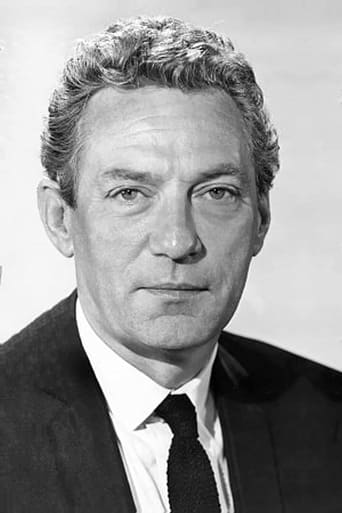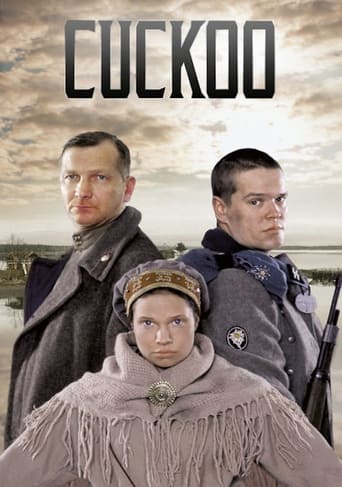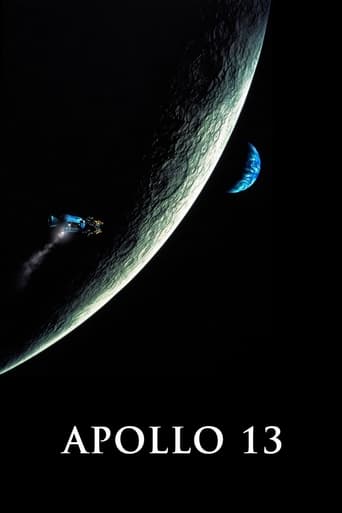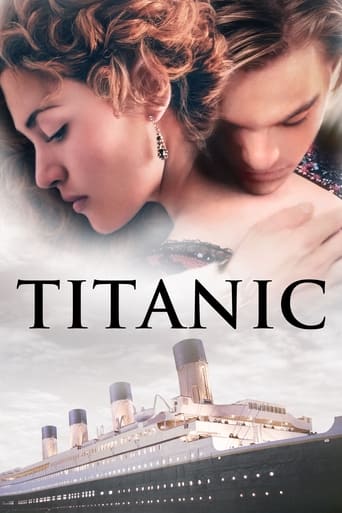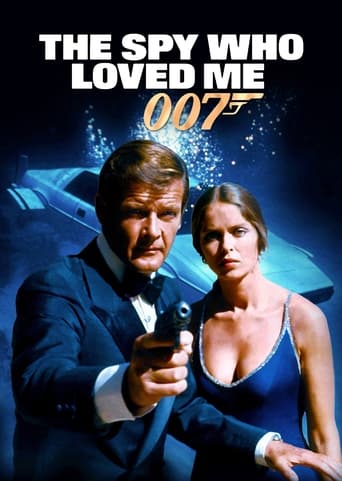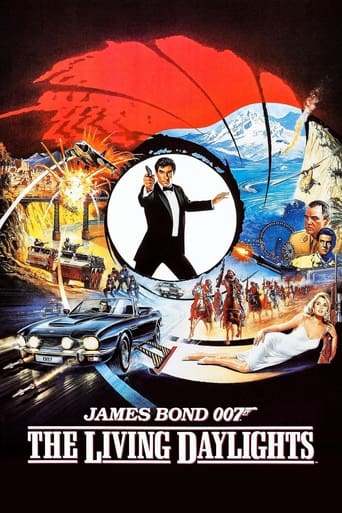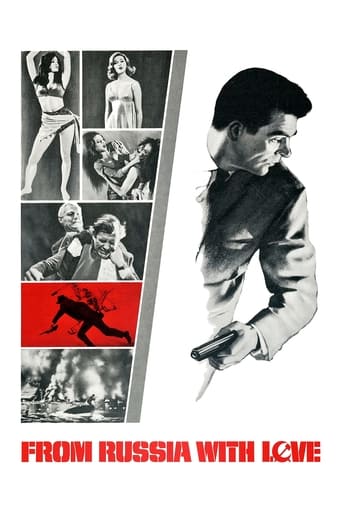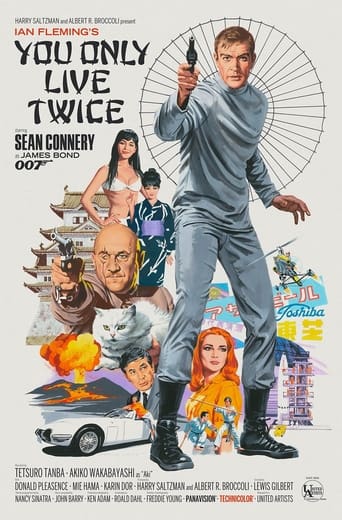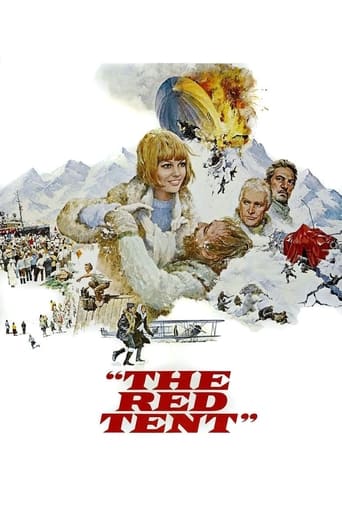
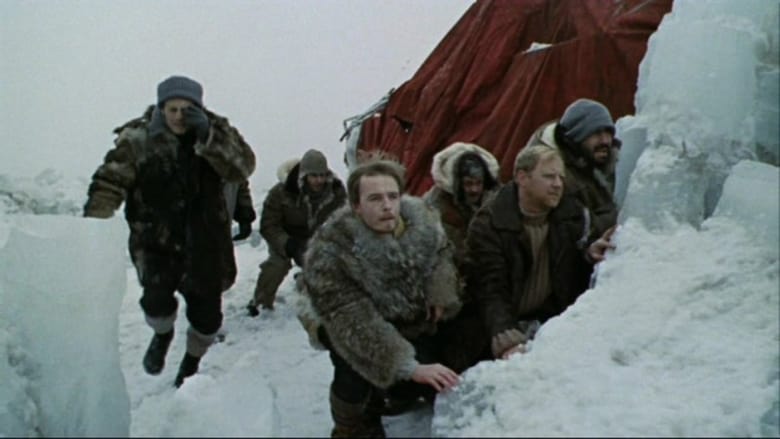
The Red Tent (1969)
Torn by personal guilt, Italian General Umberto Nobile reminisces about his 1928 failed Arctic expedition aboard the airship Italia.
Watch Trailer
Cast


Similar titles
Reviews
The Red Tent (1969)Plot In A Paragraph: Torn by personal guilt Italian General Umberto Nobile (Peter Finch) reminisces about his 1928 failed Arctic expedition aboard the airship Italia.Not many people have seen this movie, it runs a little too long, and it's not what I'd call an enjoyable movie, but that doesn't mean it isn't a good one. The entire movie takes place in the generals mind. He calls back various participants to the events, to re-live what happened, and then ultimately pass judgement on him. It's well directed, well acted and it has a nice score tooAttempting to rid himself from Bond, it is the first time Connery would play the wiser, older man, he turns up late on, in what is only a supporting role (at best) or a glorified cameo. The Red Tent was another Connery movie to fail at the box office.
An Italian/Russian co-production and featured by a great cast as Peter Finch as Nobile, Sean Connery as Amundsen , Massimo Girotti as Romagna, Claudia Cardinale as Nurse , Mario Adorf as Radio Operator and Hardy Krüger as Lundborg . This interesting flick reminisces about General Nobile and his 1928 failed Arctic expedition aboard the aircraft Italia . An exciting account dealing with bids to rescue the survivors of a dirigible which crashed in a blizzard near the North Pole . Highly imaginative, fictionalized version of these sad events . The film deal with General Nobile and Amundsen , but this is not a story of his race with Captain Scott to reach the South Pole -similarly to Cook and Peary in North Pole- , but a later episode in his moving career . Interesting and thought-provoking screenplay by prestigious writers : Richard DeLong Adams and Ennio De Concini though the script holds some inconsistencies in the dialogue . Big name cast who has to struggle hard to come to terms the strange happenings as when there appear ghost roles and all of them form a peculiar jury against General Nobile to be judged accused for desertion and cowardice . Very good acting by Peter Finch as Italian General Umberto Nobile torn by personal guilt . In between his last two assignment as James Bond , Connery gave some nice acting for the cinema and this portrait of the Norwegian explorer Amundsen is one of them . Sensitive and moving musical score by the great maestro Ennio Morricone . And colorful pictorial qualities of the cinematography are very strong . The yarn was compellingly directed by Mikhail Kalatozov (The cranes are flying , I Am Cuba) .This roust man-versus-nature epic picture was well based on historical and biographic accounts , there are the followings : Umberto Nobile was an Italian aviator, aeronautical engineer and Arctic explorer. Nobile was a developer and promoter of semi-rigid airships during the period between the two World Wars . He is primarily remembered for designing and piloting the blimp Norge, which may have been the first aircraft to reach the North Pole, and which was indisputably the first to fly across the polar ice cap from Europe to America. Nobile also designed and flew the Italia, a second polar airship; this second expedition ended in a deadly crash and provoked an international rescue effort . The Italia, nearly identical to the Norge, was slowly completed and equipped for Polar flight during 1927–28. Part of the difficulty was in raising private funding to cover the costs of the expedition, which finally was financed by the city of Milan; the Italian government limited its direct participation to providing the airship and sending the aging steamer Città di Milano as a support vessel to Svalbard, under the command of Giuseppe Romagna . On 23 May 1928, after an outstanding 69-hour-long flight to the Siberian group of Arctic islands, the Italia commenced its flight to the North Pole with Nobile as both pilot and expedition leader. On 24 May, the ship reached the Pole and had already turned back toward Svalbard when it ran into a storm. On 25 May, the Italia crashed onto the pack ice less than 30 kilometres north of Nordaustlandet . Of the 16 men in the crew, ten were thrown onto the ice as the gondola was smashed; the remaining six crewmen were trapped in the buoyant superstructure as it ascended skyward due to loss of the gondola; the fate of the six men was never resolved. One of the ten men on the ice, Pomella, died from the impact; Nobile suffered a broken arm, broken leg, broken rib and head injury; Cecioni suffered two badly broken legs; Malmgren suffered a severe shoulder injury and suspected injury to a kidney; and Zappi had several broken ribs.The crew managed to salvage several items from the crashed airship gondola, including a radio transceiver, a tent which they later painted red for maximum visibility, and, critically, boxes of food and survival equipment which quick-witted engineer Ettore Arduino had managed to throw onto the ice before he and his five companions were carried off to their deaths by the wrecked but still airborne airship envelope and keel. As the days passed, the drifting sea ice took the survivors towards Foyn and Broch islands.A few days after the crash the Swedish meteorologist Finn Malmgren and Nobile's second and third in command Mariano and Zappi decided to leave the immobile group and march towards land. Malmgren, who was injured, weakened and reportedly still depressed over his meteorological advice that he felt contributed to the crash, asked his two Italian companions to continue without him. These two were picked up several weeks later by the Soviet icebreaker "Krasin". However, there were persistent rumors that Malmgren was killed and cannibalized .
I reckon I must have seen this as a young boy, probably around the age of 11, in the late 70'es. I saw it on TV at that time. The images of this movie to this day are very vivid in my memory, the ice, and the desperation it depicts. Although I don't recall much of the plot, and perhaps didn't even grasp it completely at the time, a few scenes are simply as etched in my brain: The scene where they struggle to repair the radio with graphite from a pencil. And of course Nobile's talks with the ghosts. I also seem to recall that Amundsen as portrayed by Connery came across as a rather self-righteous and arrogant person.A movie that can make such a lasting impression must possess some significant qualities.
Considering that from 1900 to 1937 dirigibles were part of the world of aviation, it is odd how few movies deal with them. I suspect it is because the film of the crash of the Hindenburg seems to summarize to us the fallacy of using lighter-than-air craft, but many aviation experts believe that there is still use for zeppelins and similar craft - that their cargo carrying capacities exceed aeroplanes. However, other experts deny this. To date, the following films deal with this chapter of aviation history.ZEPPELIN (Michael York has to stop the Kaiser's airforce from stealing the Magna Carta with their most modern designed Zeppelin.) THE COURT MARTIAL OF BILLY MITCHELL (Reference to the crash of the U.S. Navy Zeppelin Shenandoah in 1925, and the death of General Mitchell's (Gary Cooper's) friend, Captain Zachary Landsdowne. Mitchell was aware that the damaged Shenandoah was sent on a stupid political publicity tour in Ohio when it should have been repaired, and it was sent straight into a dangerous thunderstorm pattern.) THE RED TENT HINDENBERG (A film about the destruction of the great Zeppelin, with the emphasis on the theory that an anti-Nazi crewman put a time bomb on board. George C. Scott finds the bomb too late to stop the plot. It incorporates the footage of the Zeppelin's destruction).THE RED TENT is an excellent film about the 1928 ITALIA disaster. I have referred to this in my review of the movie SCOTT OF THE ANTARCTIC. Briefly, General Umberto Nobile was an Italian aviation pilot and designer of "semi-rigids", a type of hybrid between a balloon and a zeppelin. A balloon has no shape, but is a bag full of heated air or hydrogen or helium, attached to a small carriage for the passengers (usually from two to five people. A zeppelin has a total framework and keel, which contains separate bags within, each containing hydrogen or helium gas lifting it. Unlike a balloon, which depends on the wind currents to steer the bag, the zeppelin has electric/gasoline motors that propel it in one direction or another. As zeppelins are large they require crews (usually of 24 or more men). The semi-rigid is a keel with half a framework, but the bags are not supporting a metal cover. Rather the bag is like an elongated balloon.Nobile had great belief in his semi-rigids, but (like the zeppelins) they met with some success, some failure. In 1922 a semi-rigid he designed and sold to the U.S. Government, the ROMA, blew up in Hampton Roads, Virginia, when it touched a high tension wire that was across part of the field. It killed several dozen crewmen. On the other hand, in 1926 Nobile had designed a semi-rigid called the NORGE, which was used (successfully) for a flight over the North Pole. THE RED TENT does not go into the details of this 1926 flight, which is a pity. If it did, it would explain some of the reasons for the immense public relations disaster the ITALIA proved to be. To begin with, Nobile is an Italian. He was fully willing to work for the fascist government of Benito Musolini, but his work was only supported by that dictator as long as it's success was useful in advertising his regime's ability to make things better in Italy. However, one of the heroes of Fascist Italy, and one of the brightest men in the government, was the Italian war hero and aviation pioneer General Italo Balbo. Balbo is forgotten today, as he was tarred with being a supporter of the Fascists. What is forgotten is that in the 1920s up to 1935 fascism in Italy had many supporters, including Winston Churchill, who felt it was necessary to give Italy a strong centralized government. Balbo, within the Fascist regime, was a smart man who did his best to modernize the Italian air force and Italy's aviation industry. He also tried to emphasize Italy's ties to the democracies in the west - flying a flotilla of planes across the Atlantic in 1933 to the Chicago World's Fair on a good will tour. His attempts to keep friendly relations with the U.S., England, and France ran afoul of Il Duce, and may have led to the accident that ended Balbo's career (he was killed by "friendly fire" shooting down his plane over Libya in 1940). Balbo was suspicious of the advantage of "lighter-than-air" aviation. He knew planes were getting larger and faster, and that the claims that long distance travel would only remain the province of zeppelins was a lot of hooey. So when Nobile presented him with his latest semi-rigids, Balbo questioned their real use. To be truthful (although Nobile did some fine work) history was on Balbo's side on this.Nobile had to maintain his own friendship with Il Duce, and to do this, he needed successful results. Now the NORGE proved (as a machine) to be wonderful. It did fly to the North Pole. But the expedition was not so wonderful. The expedition was planned by the American explorer, Lincoln Ellsworth. He asked his friend, the great polar explorer Roald Amundsen to co-direct the expedition. And then they got Nobile to design the NORGE. The problem was that Nobile was insisting he was a co-leader with Ellsworth and Amundsen on the expedition. It is possible that if Ellsworth and Nobile had been alone there would have been no problem. The problem was Amundsen. He despised Musolini's regime, and considered Nobile nothing more than a talented mechanic and chauffeur. This was hardly fair, for it was an expedition to the Pole by air, and as such it would not have gotten anywhere without Nobile and his machine. To make matters worse, while the NORGE was waiting in Spitsbergen for the right wind to travel to the Pole, a plane piloted by U.S. Navy Captain Richard Byrd and Floyd Bennett arrived. Byrd took off while the NORGE waited, and flew north. Within half a day it returned, and Byrd claimed he reached the Pole! Today we know from writings left by Bennett, and by some papers of Byrd showing his calculations, that he didn't reach the Pole, but in 1926 it was believed he did. This apparent success of heavier-than-air travel over lighter-than-air travel did not help endear Nobile's work with Amundsen.So, despite the successful flight to the Pole and back (nobody seemed to notice that Byrd's American flag could not be found there), the NORGE voyage was not the great success Nobile needed. Balbo kept carping at the obvious comparison of the semi-rigid and Byrd's trimotor. And Il Duce was upset at the way that Nordic upstart Amundsen had slighted his representative. So Nobile decided he would design a larger semi-rigid and fly to the Pole leading this expedition by himself. Il Duce approved. Balbo just glared and said nothing.THE RED TENT follows what happens. The voyage was a success again at the start. But an accident caused the ITALIA to crash on the ice, causing one of the gondolas to land on the ice with most of the crew. The out of control semi-rigid bounced back with nine men on board. It and the nine men drifted out of sight and were never seen again. Nobile (fortunately) had the main gondola, with the supplies and the radio. A red colored tent was set up on the ice, and distress signals were sent out. Certainly help would come. But it didn't come. A very conservative and timid second in command had been left by Nobile in Spitsbergen, and although he got some of the signals he kept from releasing any requests for international assistance. After all, this fool reasoned, Nobile and the survivors should be rescued by Italians. Ordinarily this made sense, but Balbo and Musolini could not find the huge resources needed to assist in the rescue by themselves, particularly as the survivors were hundreds of miles north of Spitsbergen. So valuable time was lost.Some of the survivors, the Finnish meteorologist Malmsen and two Italian crewmen, talked Nobile into letting them try to cross the ice to Scandanavia to get help. What happened next is not really known. In the film Malmsen dies of exhaustion and starvation but the Italians manage to survive. In reality the possibility exists that Malmsen was killed and eaten by the Italians (his body was never found).Malmsen's girlfriend (Claudia Cardinale in the movie) goes to get Amundsen's assistance. In realty this was not necessary. Amundsen recalled Nobile with considerable distaste. As mentioned before he disliked the fascist regime, but there is a lingering feeling that he actually was a nordic racist who disliked Italians. He decided to get a plane and rescue Nobile (and proceed to humiliate the uppity "chauffeur" for his temerity at challenging Amundsen in polar ability). But the plane he got, a modern French plane, had an air cooled motor. Amundsen may have known much about planning depots of food, and knowing how much food to leave per member of an expedition, but he was not a mechanic (ironically enough). He and a small crew took off and were never seen again. Years later some wreckage was located, showing (according to Amundsen's fellow polar explorer, Vihiljamar Steffenson)that the plane must have crashed in the gulf stream, and that Amundsen and his crew died trying to use one of the wings as a raft.A plane, piloted by an Italian, finally did arrive, but it only rescued Nobile. Nobile made the error of going first, presumably planning to return for the others. It turned out he did not have to - a Soviet ice breaker, the KRASSIN, arrived and rescued the remaining survivors (including the two Italians last seen with Malmsen). Of course, Musolini was furious. There was a huge death toll. There was a humiliating example of possible cannibalism by two Italians. THere was a question of the cowardice of General Nobile in leaving his surviving crew behind. Finally the remaining men, all fascists mind you, were rescued by sailors from Communist Russia!Balbo gleefully was able to convince his boss to shelve further "lighter-than-air" travel adventures (indeed further "lighter-than-air" transportation design). Nobile was openly disgraced by Il Duce, and left Italy (ironically he ended working for the Soviet Union, where Dirigibles were used for transportation for decades after the west stopped using them).The movie is well acted by Peter Finch as Nobile, Sean Connery as Amundsen, and Cardinale as Malmsen's girlfriend. It glosses over the odd attitude of Amundsen towards Nobile, and the actual death of Malmsen. Amundsen, as one of the ghosts Finch talks to, says his plane crashed near the wrecked dirigible, and he was the last survivor of both groups. Supposedly, his final hours are spent reading Mark Twain's Huckleberry Finn. But the film does tackle the issue of command and leadership, and all the figures in the disaster are found to be lacking it. Nobile may not have been the coward Musolini claimed he was, but when asked by Amundsen what he thought of when he boarded the plane that took him away from the Red Tent, he realizes he did abdicate his responsibilities to his men: he only thought of taking a hot bath!


